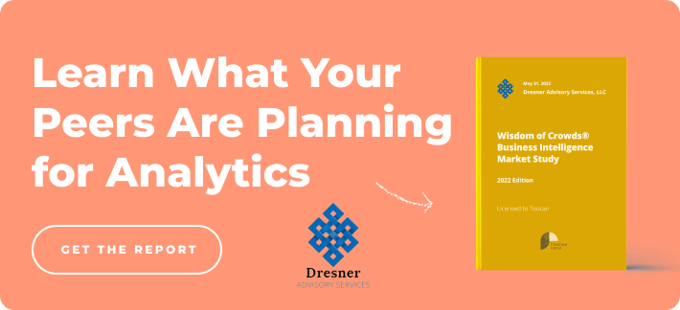Data is in abundance. Businesses create tons of data from multiple sources every single day. To use this data to make smarter decisions, identify problems, maintain profitability and ensure competitiveness, businesses are turning to software solutions. The two major contenders are Business Intelligence (BI) and Business Analytics (BA) solutions. So which one of these is better and how are they truly different? To understand this let's start with the definitions.
Business Intelligence
Business Intelligence is the process of collecting, storing and analyzing data from business operations. BI provides comprehensive business metrics, in real-time, to support better decision making. If you are looking to better analyze your business operations, discover pain points in your product or draw actionable insights from large data sets, then BI solutions are for you.
You can create performance benchmarks, spot market trends, increase compliance, and improve almost every aspect of your business with better Business Intelligence.
Business Analytics
Business Analytics is a child of BI. It refers to the practice of using a company’s data to anticipate trends and outcomes. If you are looking to forecast trends using available data, find solutions for issues from descriptive analytics or discover the possibilities your data has to offer, then BA is for you.
Business Analytics includes data mining, statistical analysis, and predictive modeling that help make more informed decisions.
Business Intelligence (BI) vs Business Analytics (BA)
|
|
Business Intelligence (BI) |
Business Analytics (BA) |
|
Area of Use |
BI is used to support data-driven business decision-making. |
BA is used to explore and analyze historical and current data. |
|
Timeline Specification |
BI is used to make improvements right now. Focused on today |
BA solves problems before they’ve occurred. More about future possibilities. |
|
What is it Made for |
BI tools are excellent solutions for managers who want to improve decision making and understand their organization’s productivity, work processes and employees |
BA is the solution if you want to analyze your company, your market and your industry with the goal of predicting business trends to help you remain competitive in the future. |
|
Area of Focus |
BI prioritizes descriptive analytics, which provides a summary of historical and present data to show what has happened or what is currently happening |
BA focuses on predictive analytics, which uses data mining, modeling and machine learning to determine the likelihood of future outcomes |
|
Questions Answered |
Answers the question’s "what and how" |
Answers the questions "when and why" |
Let's take an example.

You have a flannel blanket business. Last month you saw record profits and you want to understand why. Business Intelligence shows you that there was a spike in red flannel sales over the last two weeks all over New England. This allows you to increase the production of red flannels and ship larger consignments to New England. Business Analytics digs into the reason for this spike and finds out that it is specifically in major cities where you have started a new advertising campaign. This validates the success of your ads and helps you understand the increase in sales you will have when running advertisement campaigns in other cities around the world.
Business Intelligence or Business Analytics: Which one should you choose?
The choice for your data management shouldn’t be Business Intelligence or Business Analytics. A business needs to know "what, when, how and why" while trying to understand its data. So in reality, you need a combination of Business Intelligence and Business Analytics to be successful.
When choosing a data tool, don’t get hung up on the semantics of Business Intelligence vs Business Analytics, since a lot of solutions out there don’t abide by their standard definitions. Rather focus on your data needs. Start with a BI strategy that addresses the following questions
- Who are the key stakeholders?
- Who will be using this system?
- Who needs business intelligence?
- What will be measured?
- What support is needed for the users?
Once you have a clear understanding of the above, reach out to a Business Intelligence Expert who can help you find a solution with all the BI and BA functionalities that you would need.
Learn how to build an insightful BI dashboard and check out Toucan to see why we have the highest adoption rate of any software.



